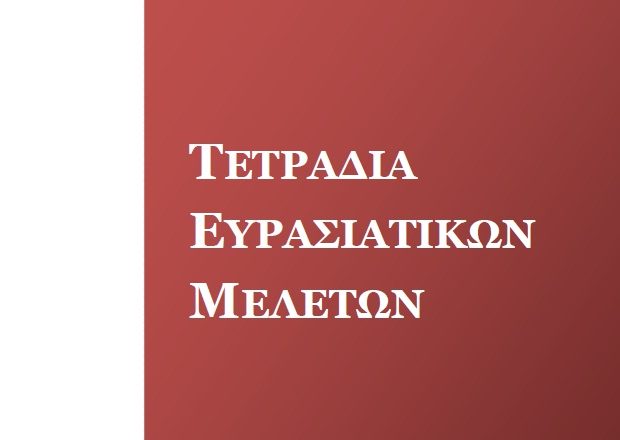Eurasian Studies Journal – 1(1) 2016
In this first issue of the Eurasian Studies Journal, one may find analyses (in Greek) of some of the most crucial diplomatic, military, financial and energy developments which took place during the interactions of the dominant –or non-dominant– units, mainly of the regional subsystem of Caucasus during the period September-December 2015.
The Journal contains analyses such as:
- The Russian-Armenian defense agreement, which sets the base for a single air-defense system, that acts as a deterrent against the competitive strategic axes.
- The actions of non-dominant players in Georgia, whose objective is the expansion of the self-proclaimed “Islamic State” in the Caucasus region.
- The relations between Georgia and Russia with regard to energy issues.
- The relations between Iran, which plays an important role in the regional developments in Caucasus as well as in the Middle East, and Germany after the lifting of sanctions that were imposed from influential powers of the international system, because of the nuclear programs of Tehran.
- The enhancement effort of the relations between Armenia and the European Union, so as to establish democratic institutions and the economy in the aforementioned country.
These analyses are the product of research made by the members of the scientific “Research Group on Caucasus” of the Turkish and Eurasian Studies Laboratory (T.E.S. Lab), which consists of undergraduate and graduate students of the Department of International and European Studies of the University of Piraeus. During their attempt, they were surrounded by experts in Eurasian affairs, members and partners of the T.E.S Lab, who monitored and highlighted these original analyses, so as to ameliorate and complete them. These analyses seek to describe and interpret the internal and international relations of the dominant units of the Caucasus regional subsystem, the relations between them as well as their relations with other countries of the broader region, utilizing scientific methods offered by the field of International Relations, in order to expand them later on, when the time comes, so as to include the Central Asian regional subsystem, too.
You can read the file by clicking here.


